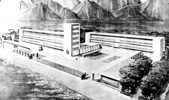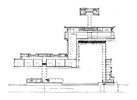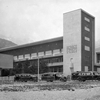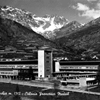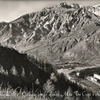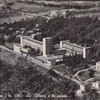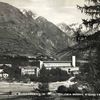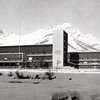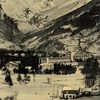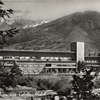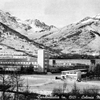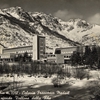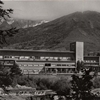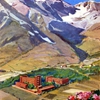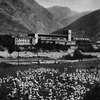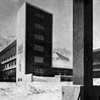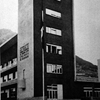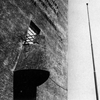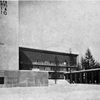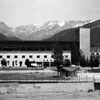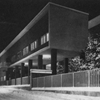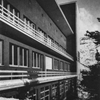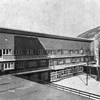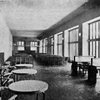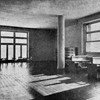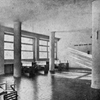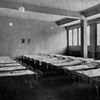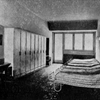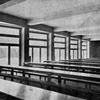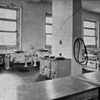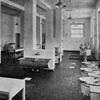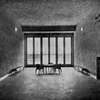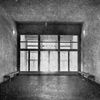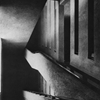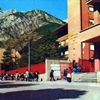
|
According
to the size of the fascio of Turin in Bardonecchia the biggest mountain
colony in whole Italy was realized. It offered space to 1.000 children.
The ensemble consists of five wings which Levi-Montalcini put together
by different heights, sizes, facades and colors to a dynamic composition.
Entrance building: The two storey building along the street is the "gate"
to colony. Half of the ground floor was designed as open lobby. In this
wing were the examination and the hospital rooms as well as the director's
office.
Dormitory boys: Behind the entrance building rises the wide, four storey
dormitory for the boys. Three stories are marked with ribbon windows
and balconies-the dormitories are orientated to the south to capture
a maximum of sunlight-, the attic with round windows. The dorms were
organized in rooms for 6 to 7 and 9 to 10 children each connected to
a washing room.
Tower: The eastern façade of the boy's dormitory is defined by a tower-a
landmark in the mountainous countryside. Towards the street its façade
has no windows and underlines its verticality in opposite to the horizontal
ribbon windows and balconies of the dormitory. The only aperture of
this front is the small door of the speaker's balcony which is designed
as an stylized axis of a fascio. This vast front seems only to function
as a frame for the lettering above the balcony: "FEDERAZIONE DEI FASCI
DI COMBATTIMENTI A.XVI COLONIA MONTANA IX MAGGIO". On the facade with
the windows a wide open stair leads to the entrance. The stair is flanked
by a wall which holds the pedestal of a flagpole.
Dining hall: Set at right angle to the dormitory of the boys a low-rise
building with the dining hall is connected. Its eastern façade had a
saw tooth design to orientate the huge windows to the south.
Dormitory girls: In similar dimension to the boys' wing the dormitory
for the girls shapes the northern building front of the courtyard. On
the ground floor were several functions as another dining hall, a reading
room and an assembly hall.
Coach house: To shape the eastern building front of the courtyard a
two storey storage and coach house was extended by arcade which height
corresponds to the adjacent low-rise dining hall. Tower, dining hall,
girl's dormitory and arcade shape a courtyard for the roll call ground.
To the street the courtyard is defined with a fence.
The intense colors have been passed down to today. Besides the white
of the closed facades a reseda green dominates the ensemble. The interiors
are mostly held in yellow while the floor are of red sandstone.
In the course of the years the colony was rebuilt and changed step by
step. So the open lobby of the entrance building was closed and the
size of some windows were reduced. The low-rise dining hall was enlarged
by another storey and an arcade. Also the coach house was extended.
The last renovations were done on occasion of the Olympic Winter Games
of Turin 2006 when the colony served as accommodations of the athletes.
|
Historical
photos
Photos
Arne Winkelmann
|
| Bibliography: |
Cities
of Childhood. Italian Colonie of the 1930s, (Ausst.-Kat.), ed. Alex Wall
a. Stefano di Martino, London 1988, p. 44
Architettura, No. 7, 1937
L'Architecture d'aujourd'hui, No. 7, 1939, p. 27
Domus, No. 659, 1985, p. 26 |
